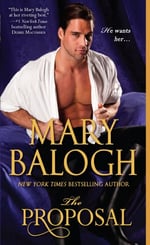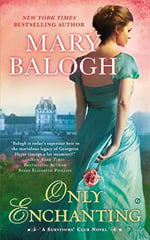In the evolving discussion of content warnings, the question of whether or not romance novels need content warnings for sexual content has become the current discussion topic. My brief opinion is that content warnings hurt no one and as an author you know better than readers, who have never read your work, the quantity and nature of sex in your books. My longer opinion is complicated.
As a demisexual reader, people bring me and others who are ace-spec up a lot in this debate. While this sexual content in romance novels is not an issue for me, I do know that it is a concern for others. For any variety of reasons, sex scenes can be triggering and not just for those who are ace-spec. There are the sex-repulsed, the abuse survivors, the assault survivors, and more who may just want to experience the rush of hope that comes with a story about people finding partners and maybe falling in love.
The idea that noting what type of sexual content is present in a book is somehow passing judgment on the book is nonsense. This doesn’t call into question the romance genre or the validity of sex scenes in a novel. A content warning that says “contains multiple explicit sex scenes” prepares a reader who may want to know that beforehand.
That content warning does not reinforce the stigma against sex in romance, unlike words like “clean” and “sweet;” being open about content helps readers without shaming anyone. We forget sometimes that just because we do not directly benefit from a thing that doesn’t make it bad. Let me rephrase: just because you don’t need content warnings doesn’t mean they don’t help my reading experience. Just because you want to read erotic romances masquerading as contemporary romances does not mean I do.
And absolutely no one is required to read content warnings. For this reason, Love in Panels puts content warnings (except heat levels) at the bottom of the review. But guess what? That heat rating listed just after the title and author is a content warning. An R rating is on-page sex. A PG-13 (or maybe PG-12 according to my reviews) rating is kissing to heavy petting. Zero judgment, just informed reading. [Editor’s Note - We just changed these to Re, PG-12, and NSFW because we’d like to not be sued by the MPAA. Most YA romance falls into the PG-12 category, if this gives you any guidance. Closed door romance may or may not, depending on when they close the door. Books with no sex at all (not closed door) are tagged as “no sex.”]
For all the work authors and their marketing teams do to make the cover and back cover copy convey the tone of the book, not all of these signals are recognizable. When we were in the heyday of the abs covers, you never really knew if you were getting an erotic romance or low heat small town romance. I think a lot about this in regards to Mary Balogh’s Survivor’s Club series. The first three books were published with Dell and even Balogh said that the covers did not adequately convey what her books are. The subsequent four books published by Berkley were a better match for Balogh’s stories and her audience.


So, how do you know what you are getting if you can’t judge by the cover? If your answer is to read reviews, that only works if you are reading a book that has actually been published and reviewed. This does not help reviewers who might prefer to avoid books with on-page rape or assault or childbirth or even explicit sex scenes. Even if the reviews exist, there is no guarantee that the reviewer has catalogued any content warnings.
The big truth is that content warnings for sex (or anything else) hurt no one. If an author or publisher uses them, they are signalling that they care about their readers, which is excellent for loyalty. I believe we understand as a community that no one person is perfect and will pick up on everything (but Corey Alexander is amazingly thorough), so where is the harm in trying?
Except, you might say, you’ve labeled your books as “steamy” or “filthy” or “dirty,” isn’t that enough? If you can tell me what the universal definitions of steamy, filthy, and dirty are in regards to romance, you’re way ahead of me. I look at those words and they mean nothing to me. Is it that they talk explicitly about the sex they are having while they have it? Is it a particular sex act? Is it something taboo? Is it three or more sex scenes? This is not to say that I have an opinion on the use of these words or the varieties of content they cover, my complaint is that they do not have a consistent meaning. Use them all you want, but don’t pretend we all think it means the same thing.
All of this to say that content warnings for sexual content are good, much like other content warnings.
[More Editor’s Note - I was in a conversation on Twitter about how authors cannot tag a book as containing “erotic content” on Amazon without the book being flagged as erotica and removed from search results. The consensus was that authors can include something like “content guidance is available at the author’s website.” There are a variety of options available to authors, such as putting content guidance in the beginning of your books (Kindle sample) like Romance Class authors do. Some authors list content warnings after their blurb. I have yet to see one that advises regarding sexual content, but it would be easy to say something like “contains mature themes,” like much of the Black Romance community does. This is vague, but when combined with the “content guidance available…” note, it can signal to some readers to proceed with caution or to do a little more sleuthing if they want to know for sure.
I would argue that if your only concern is Amazon search results, it’s easy enough to provide content guidance whenever you’re plugging your books elsewhere.]

